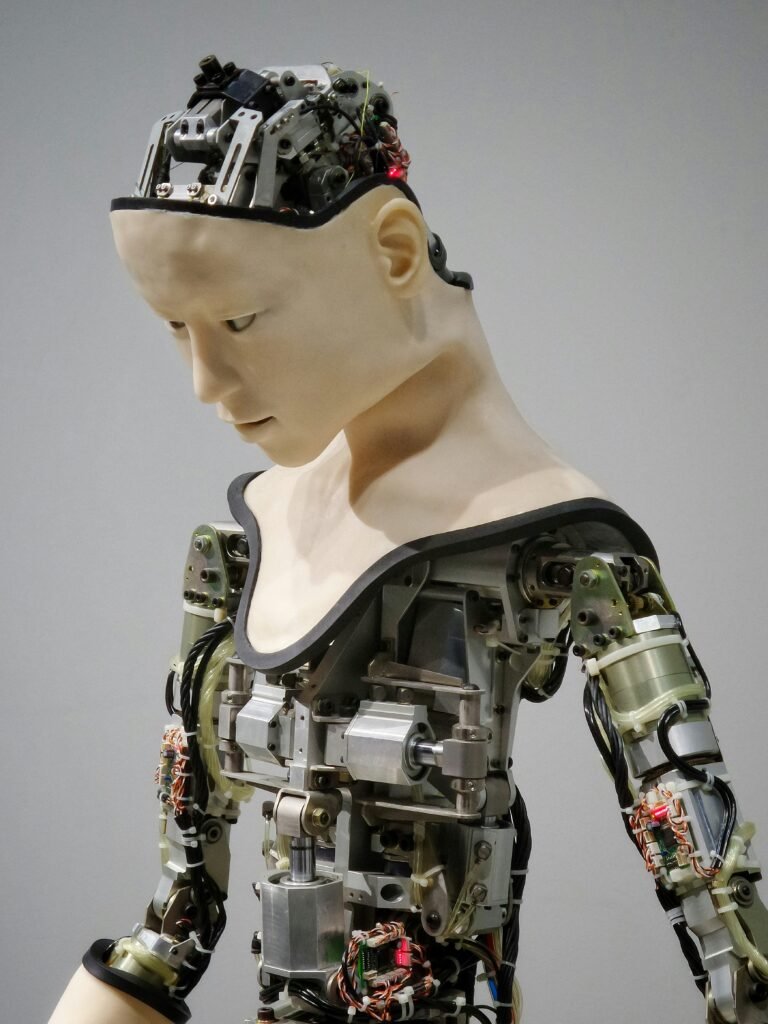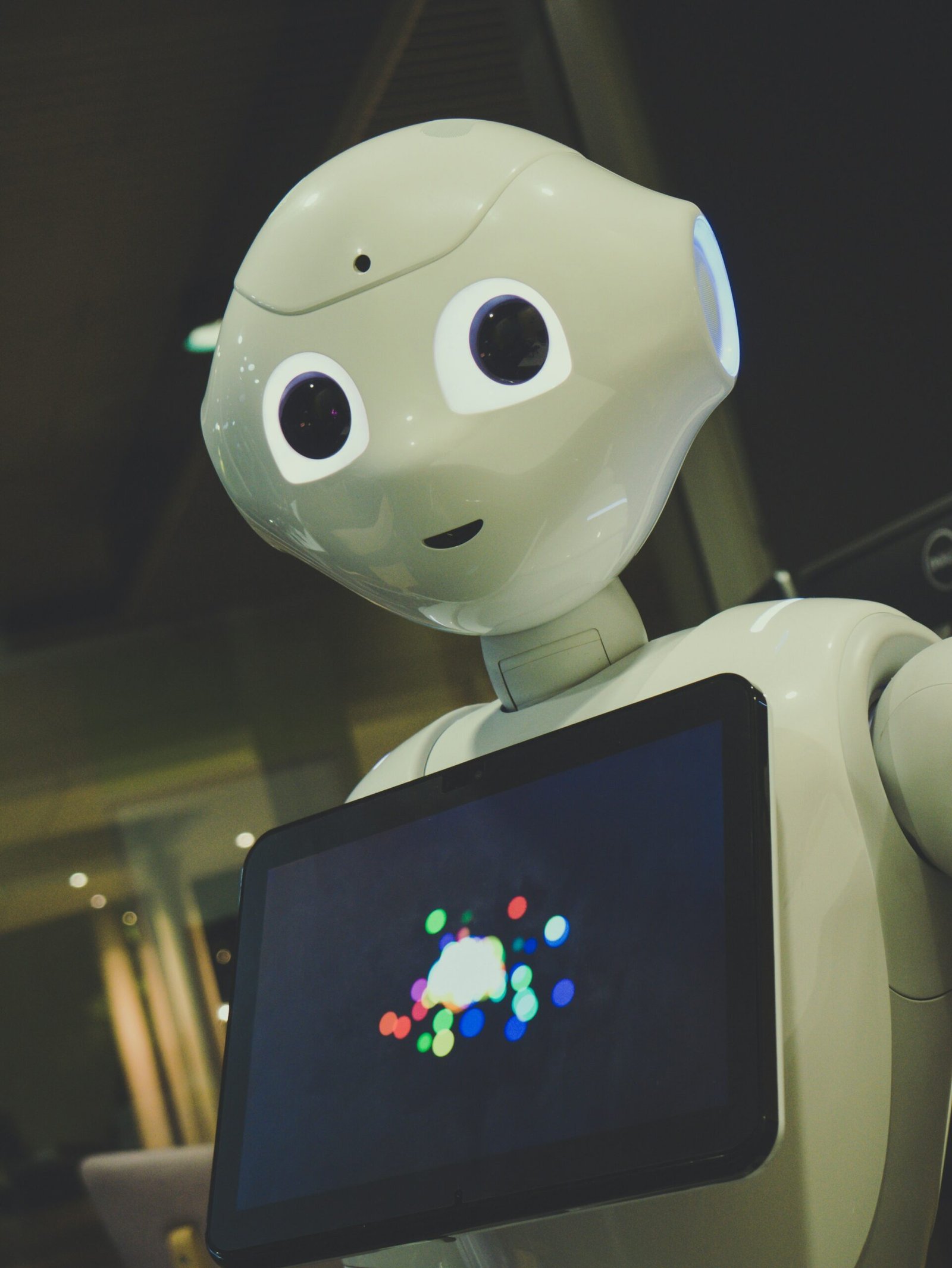Imagine the endless possibilities of creating your own artificial intelligence. With the rapid advancement of technology, the dream of bringing a virtual companion to life is closer than ever before. In this article, we will explore the step-by-step process of crafting your very own AI, unlocking the secrets behind its development and unleashing a world of futuristic innovation. Get ready to embark on a journey that will ignite your curiosity and empower you to become a creator of the future.

Understanding Artificial Intelligence
Explanation of AI
Artificial Intelligence (AI) refers to the ability of a computer or machine to mimic and simulate human intelligence. It involves the development of algorithms and models that enable machines to perform tasks that would typically require human intelligence, such as speech recognition, decision-making, problem-solving, and learning. AI systems are designed to analyze data, recognize patterns, and make predictions or recommendations based on the information they process.
Types of AI
There are several types of AI, each with its own capabilities and applications. The two major categories of AI are Narrow AI and General AI. Narrow AI, also known as Weak AI, is designed to perform specific tasks or solve specific problems within a limited domain. Examples of narrow AI include virtual personal assistants like Apple’s Siri and Amazon’s Alexa, as well as recommendation systems used by online platforms.
On the other hand, General AI, also known as Strong AI, represents machines with human-like intelligence that can perform any intellectual task that a human being can do. While General AI is still mostly a concept, researchers and scientists are working towards developing systems that can achieve this level of intelligence.
Benefits of Creating AI
The development and implementation of AI offer numerous benefits across various industries and sectors. AI has the potential to enhance efficiency, accuracy, and productivity by automating repetitive or mundane tasks. It can analyze and process vast amounts of data, leading to improved decision-making and predictive capabilities.
AI can also revolutionize healthcare by assisting in diagnosis and treatment planning, leading to more accurate and personalized healthcare solutions. In the field of transportation, AI can improve traffic management, enhance autonomous driving systems, and contribute to the development of smart cities. Additionally, AI has the potential to transform industries such as finance, customer service, manufacturing, and education, among others, by streamlining processes and improving overall performance.
Developing AI Skills
Key Skills for AI Development
To develop AI systems, individuals need to acquire specific technical skills. Some of the key skills for AI development include:
-
Programming: Proficiency in programming languages such as Python, Java, or C++ is essential to implement AI algorithms and models.
-
Mathematics and Statistics: Strong mathematical and statistical knowledge is necessary to understand and apply concepts related to algorithms, probability, and data analysis in AI development.
-
Machine Learning: Familiarity with machine learning techniques, including supervised and unsupervised learning, is crucial for training AI models and making predictions.
-
Data Analysis: Competency in analyzing and interpreting data is essential for identifying patterns and trends that can be used to inform AI systems.
Education and Learning Resources
There are various resources available for individuals interested in acquiring AI skills. Online platforms, such as Coursera, edX, and Udemy, offer AI-related courses and certifications. These courses cover topics such as machine learning, deep learning, and natural language processing, providing comprehensive learning experiences with hands-on projects.
Additionally, universities and institutions around the world offer undergraduate and graduate programs in AI and related fields. Pursuing a degree in computer science, data science, or AI can provide a solid foundation in the subject matter.
Collaborative AI Projects
Engaging in collaborative AI projects can enhance learning and practical experience. Participating in open-source projects or joining AI communities allows individuals to collaborate with experienced professionals and fellow enthusiasts. These projects provide opportunities to contribute to real-world AI applications, gain insights from others, and receive feedback on your work. Collaborative projects also encourage creativity and innovation by enabling individuals to explore different AI techniques and approaches.
Designing AI Systems
Defining AI Objectives
Before designing an AI system, it is essential to clearly define its objectives. This involves understanding the problem the AI system aims to solve or the task it needs to perform. Defining the objectives helps in determining the specific requirements, functionalities, and constraints of the AI system. It is crucial to align the objectives with the overall goals and needs of the organization or project for which the AI system is being developed.
Identifying User Needs
Understanding the needs and expectations of the end-users is crucial for designing effective AI systems. Conducting user research, interviews, and surveys can help identify the tasks users want the AI system to perform, the user interface preferences, and any specific constraints or limitations that need to be considered. By incorporating user perspectives and feedback during the design process, AI systems can be tailored to meet user requirements and enhance user experience.
Data Collection and Analysis
Data plays a critical role in the design and development of AI systems. Gathering relevant and high-quality data is essential for training AI models and enabling accurate predictions. Data collection methods depend on the specific domain and application of the AI system. It involves collecting and preprocessing data from various sources, ensuring data integrity and privacy. Additionally, data analysis techniques, such as exploratory data analysis and feature selection, help in understanding the characteristics and patterns within the data, which inform the design and development of AI systems.
Choosing AI Technologies
Machine Learning Algorithms
Machine learning algorithms form the backbone of AI systems, enabling them to learn from data and make predictions or decisions. There are various types of machine learning algorithms, including supervised learning, unsupervised learning, and reinforcement learning. The choice of algorithm depends on the type of data available, the problem being addressed, and the desired outcome. Common machine learning algorithms include linear regression, logistic regression, decision trees, support vector machines, and neural networks.
Deep Learning Frameworks
Deep learning is a subset of machine learning that focuses on artificial neural networks with multiple layers. Deep learning frameworks provide the necessary tools and libraries for designing, training, and deploying deep neural networks. Popular deep learning frameworks include TensorFlow, PyTorch, Keras, and Caffe. These frameworks offer a range of functionalities, such as automatic differentiation, GPU acceleration, and pre-built neural network architectures, simplifying the process of developing and optimizing deep learning models.
Natural Language Processing Tools
Natural Language Processing (NLP) enables machines to understand and process human language. NLP tools and libraries provide functionalities for tasks such as text classification, sentiment analysis, language translation, and chatbots. Some commonly used NLP tools include NLTK (Natural Language Toolkit), SpaCy, Gensim, and StanfordNLP. These tools offer pre-trained models, APIs, and utilities that simplify the implementation of NLP in AI systems.

Building the AI Infrastructure
Selecting Hardware
Choosing the right hardware is crucial for the successful development and deployment of AI systems. The hardware requirements depend on the complexity and scale of the AI project. High-performance processors, such as Graphics Processing Units (GPUs) or Tensor Processing Units (TPUs), are often used to accelerate computations required for training and running AI models. It is important to consider factors such as memory capacity, processing power, and scalability when selecting hardware.
Choosing Cloud Services
Cloud computing offers several advantages for AI infrastructure. Cloud services provide scalable computing power and storage, which is essential for managing and processing large datasets. Cloud platforms like Amazon Web Services (AWS), Google Cloud Platform (GCP), and Microsoft Azure offer AI-specific services and tools that can be easily integrated into AI workflows. These services include machine learning platforms, GPU instances, data storage, and deployment options, allowing developers to focus on AI development rather than infrastructure management.
Setting Up Development Environment
Creating a suitable development environment is crucial for efficient AI development. This involves setting up the necessary software tools and libraries required for coding, testing, and running AI models. Integrated Development Environments (IDEs) like PyCharm, Jupyter Notebook, or Visual Studio Code provide a user-friendly interface for writing and debugging AI code. Installing and configuring AI frameworks, libraries, and dependencies are essential steps to ensure a seamless development experience.
Coding and Programming AI
Selecting Programming Languages
Choosing the right programming language is important for AI development, as different languages offer various benefits and trade-offs. Python is the most popular programming language for AI and machine learning due to its simplicity, readability, and extensive libraries. Other languages like Java, C++, and R are also commonly used for AI development, depending on the specific requirements and preferences. Having a good understanding of programming concepts and syntax is essential for implementing AI algorithms and models.
Implementing Machine Learning Models
Implementing machine learning models involves coding the algorithms and logic that enable AI systems to perform tasks. This requires applying the selected machine learning algorithms and techniques to the available data. Libraries such as scikit-learn, TensorFlow, and PyTorch offer pre-built functions and APIs that simplify the implementation process. By writing clean and efficient code, developers can ensure the accuracy and performance of the AI models.
Creating Neural Networks
Neural networks are a key component of deep learning and are used in various AI applications, such as image recognition and natural language processing. Designing neural networks involves building layers of interconnected artificial neurons that mimic the structure and functioning of the human brain. Libraries like TensorFlow and PyTorch provide tools for designing and training neural networks by defining their architectures, specifying activation functions, and optimizing weights and biases. Creating effective neural networks requires a solid understanding of deep learning concepts and techniques.

Testing and Training AI
Formulating Test Cases
Testing is a critical phase in AI development to ensure the accuracy and reliability of AI systems. Formulating test cases involves creating scenarios and datasets that cover a wide range of possible inputs and situations. Test cases should include both expected and edge cases to validate the AI system’s performance under different conditions. By testing the AI system against various scenarios, developers can identify and fix any issues or errors before deployment.
Evaluating AI Performance
Evaluating the performance of AI systems involves measuring their accuracy, efficiency, and robustness. Metrics such as precision, recall, F1 score, and accuracy are commonly used to evaluate classification and prediction tasks. For regression tasks, metrics like mean squared error or mean absolute error are often employed. Developers should also consider the computational resources required by the AI system during evaluation. Regular evaluation and benchmarking help track the system’s performance over time and identify areas for improvement.
Using Training Data
Training data is a crucial factor in the performance of AI systems. High-quality and diverse training data ensure that AI models are able to generalize well and make accurate predictions. Data preprocessing techniques, such as normalization, feature scaling, and handling missing values, help in preparing the training data for effective model training. Additionally, data augmentation techniques like image transformations or text data augmentation can be applied to increase the diversity and quality of the training data.
Ethical Considerations in AI
Ensuring AI Fairness and Bias
Ethical considerations play a vital role in the development and use of AI systems. AI technologies should be designed to be fair and unbiased, without favoring any particular group or demographic. Bias in AI can result from biased training data or the inherent biases of the developers. It is important to address and minimize biases through techniques such as diverse and representative training data, algorithmic audits, and bias-awareness during the development process.
Addressing Data Privacy
Privacy concerns arise when dealing with personal data in AI systems. Developers must ensure that data privacy is respected and protected throughout the AI lifecycle. This involves implementing appropriate security measures, data anonymization techniques, and compliance with regulatory frameworks like GDPR. Safeguarding user data and providing transparency regarding data handling practices are essential for building user trust in AI systems.
Implementing Transparency
Transparency in AI refers to the ability to understand and explain the decisions made by AI systems. Developers should strive to design AI models and algorithms that are explainable and interpretable. This involves using techniques such as model visualization, feature importance analysis, and rule-based explanations to provide insights into the decision-making process of the AI system. Transparent AI systems enable users to understand and trust the outcomes produced by the technology.
Deploying AI Systems
Integration with Existing Infrastructure
Successful deployment of AI systems requires seamless integration with existing infrastructure and systems. This involves understanding the technological ecosystem and constraints within which the AI system will operate. Compatibility with existing databases, APIs, and platforms is crucial for the smooth functioning and interaction of the AI system with other components. Careful planning and coordination with the IT team are necessary to ensure proper integration and minimize disruptions.
Optimizing Performance
Optimizing the performance of AI systems is essential for achieving the desired outcomes efficiently. This includes optimizing the computational resources and algorithms to reduce processing time and improve response speed. Techniques such as model compression, algorithmic optimizations, and hardware acceleration can be employed to enhance performance. Fine-tuning hyperparameters and adjusting model architectures can also contribute to improving the overall performance of the AI system.
Continuous Monitoring and Updates
Monitoring and updating AI systems on an ongoing basis is crucial to ensure their performance remains optimal over time. Continuous monitoring involves tracking key performance metrics, detecting anomalies, and identifying areas for improvement or fine-tuning. Regular updates and enhancements to AI systems ensure that they remain up-to-date with the latest advancements in the field. Monitoring and updating AI systems also allow for addressing any emerging ethical concerns or biases that may arise during real-world usage.
Maintaining and Improving AI
Bug Fixing and Troubleshooting
Like any software system, AI systems may encounter bugs or issues that need to be addressed. Regular maintenance and bug fixing help ensure that the AI system functions correctly and reliably. Troubleshooting techniques, such as debugging code, analyzing error logs, and conducting thorough testing, help identify and resolve any issues that arise. Timely bug fixing and maintenance activities contribute to the stability and longevity of the AI system.
Collecting User Feedback
User feedback is invaluable for understanding how AI systems are performing and meeting user expectations. Collecting feedback through user surveys, interviews, or feedback forms provides insights into user experiences, areas of improvement, and potential issues. Actively soliciting and analyzing user feedback helps in identifying user needs, enhancing user satisfaction, and guiding future updates and improvements to the AI system.
Iterative Improvements
AI systems can always benefit from iterative improvements to enhance their performance and capabilities. Continuous learning and improvement involve analyzing the performance data, identifying areas for enhancement, and iterating on the existing AI models or algorithms. This may include fine-tuning model parameters, incorporating new features or data sources, or exploring advanced techniques. Iterative improvements ensure that AI systems evolve and adapt to changing needs and challenges, leading to more robust and intelligent solutions.
In conclusion, understanding, developing, and deploying artificial intelligence requires a comprehensive approach that encompasses various aspects such as AI explanation, skills development, system design, technology selection, infrastructure building, coding, testing, ethical considerations, deployment, and maintenance. By following best practices and considering the diverse considerations involved, individuals and organizations can leverage the power of artificial intelligence to achieve significant advancements and transformative outcomes in various domains and industries.






